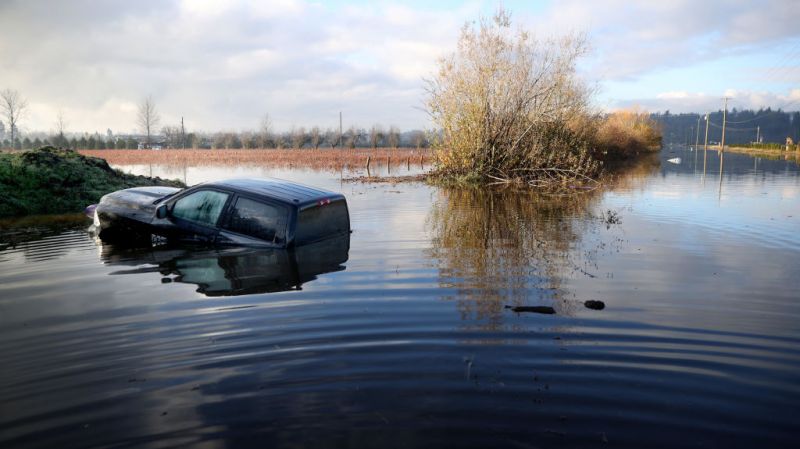Searching for a Risk Map in Stormy Times
Companies are flying through turbulence as their exposure to climate hazards slowly comes into focus

In today’s era of disruptive climate change, identifying, measuring and managing risk the same old way just won’t cut it. Up to now, risk has been a specialized corporate function. In the years ahead, it will be an all-hands-on-deck effort. That means heightened understanding of climate-related risk, a willingness to account for hard-to-quantify social factors and an upgrade of the workforce.
To learn what’s at stake, Smith Business Insight talked with Sara Alvarado, executive director at the Institute for Sustainable Finance (ISF), housed at Smith School of Business. Alvarado was head of risk and chief anti-money laundering officer at the Canada Infrastructure Bank before she joined the ISF. She currently co-chairs the World Economic Forum’s Infrastructure 4.0 Initiative.
What should organizations think about in terms of managing sustainability-related risks?
On the risk management and sustainability side, firms must recognize that sustainability is here to stay, even more so after COP26 (the United Nations Climate Change Conference held in November). Any risk manager should incorporate ESG (environmental, social and governance) factors as part of their analysis, including modeling, not just the objective aspects of it. Decompose ESG, put it into the models and then do the analysis. Sounds simple but this is a very complex exercise.
It’s hard to quantify some of the social aspects, but we’ve incorporated less quantitative factors in the past. Management experience, for example. In general, firms or investors have looked at management experience in the context of that particular company or sector-specific circumstance. There may well be an amazing CEO for an M&A deal, but not necessarily an amazing CEO for an industry undergoing fundamental changes. That match has always been incorporated into the valuation analysis, even though it’s difficult to put a number to it.
Do larger organizations generally have this expertise in-house or are they turning to third parties for assistance?
You see both. You see banks and the large financial institutions staffing up, and some are creating dedicated sustainability teams that work in tandem with the frontlines, risk management and financial reporting. At the end of the day, the ideal is to have sustainability fully integrated as part of the overall risk assessment process, but it will take some time.
The other factor is incorporating the science around sustainability. People with environmental or social backgrounds need to be a part of the entire value chain process.
You’ve talked about the importance of aligning investors and bankers, accounting, compliance and legal around ESG. Aren’t there conflicting interests that work against alignment?
There’s always been tension between risk management and the frontline. The former are oftentimes risk-averse and the frontline is focused on doing the deal. I’ve been on both sides. It’s a healthy tension because the two are making sure there’s an acceptable risk-return profile given their respective roles and, importantly, in alignment with overall company objectives.
It’s important that everyone across the value chain is educated on ESG issues and how they fit within the bigger picture. There’s no point in the frontline being educated or pursuing these strategies if risk management is going to say, ‘That’s too risky. Carbon capture and sequestration have never been tested before.’ Those tensions would be unhealthy when trying to pursue ESG strategies. Of course, this analysis should take into consideration factors such as the position of investments as part of the overall portfolio and resulting capital implications.
Companies look to standards boards and initiatives like the Task Force on Climate-Related Financial Disclosures for guidance on climate risk. But a recent report indicated that this guidance has a number of blind spots, including incomplete metrics for quantifying physical climate risk and little on common climate hazards. Firms must feel they’re on their own in assessing and quantifying climate risk.
It's overwhelming for everyone, not only those entities putting out the potential guidelines but also for users of the guidelines. There will be a period of adjustment, some process of iteration involving feedback, conversations between the market and providers of guidelines.
You need to start with some standards, and then whatever those standards are will be tested by the market, and it is important to get them right. They’ll go through the regulatory process, go through the reporting process. But it’s important to come up with standards such that when you’re comparing company A to company B, you can make an informed assessment based on similar criteria. The data is an issue though. Coming up with the data to make those comparisons is a big challenge.
And the Institute for Sustainable Finance does its part to get everyone to the same table.
Collaboration is one area where the ISF is working very hard. I believe policy, industry and finance should move in tandem as much as possible. The closer they get through having these conversations, the less disruptive the transition to net-zero will be. That’s what we're trying to do, to make a difference, setting up roundtables and making sure that industry, the public sector and finance are at the table discussing these important issues.
Do you find organizations think differently about these issues?
Most definitely. Six years ago, the European Investment Bank (the lending arm of the European Union, where Alvarado once worked) was very focused on everything green. They were the first issuers of climate awareness bonds in the world, in 2007, so that gives you a sense of how far back they go into the clean economy and creating financial instruments to facilitate that.
In Canada, you don’t enter into any senior executive conversation these days without sustainability being part of it. People realize that this is a fundamental change in the way we do business, in the way we live. They must reposition their companies, regardless of the sector in which they operate. People tend to focus on the resource sector and pollution. But look at the retail sector, supply chains, look at outsourcing into countries that have social issues or low rule-of-law scores. These dynamics are also part of the conversation.
Educating our existing workforce and the future generation of talent on sustainability issues will be key for Canada’s global competitiveness.
Photo: Justin Sullivan/Getty Images





